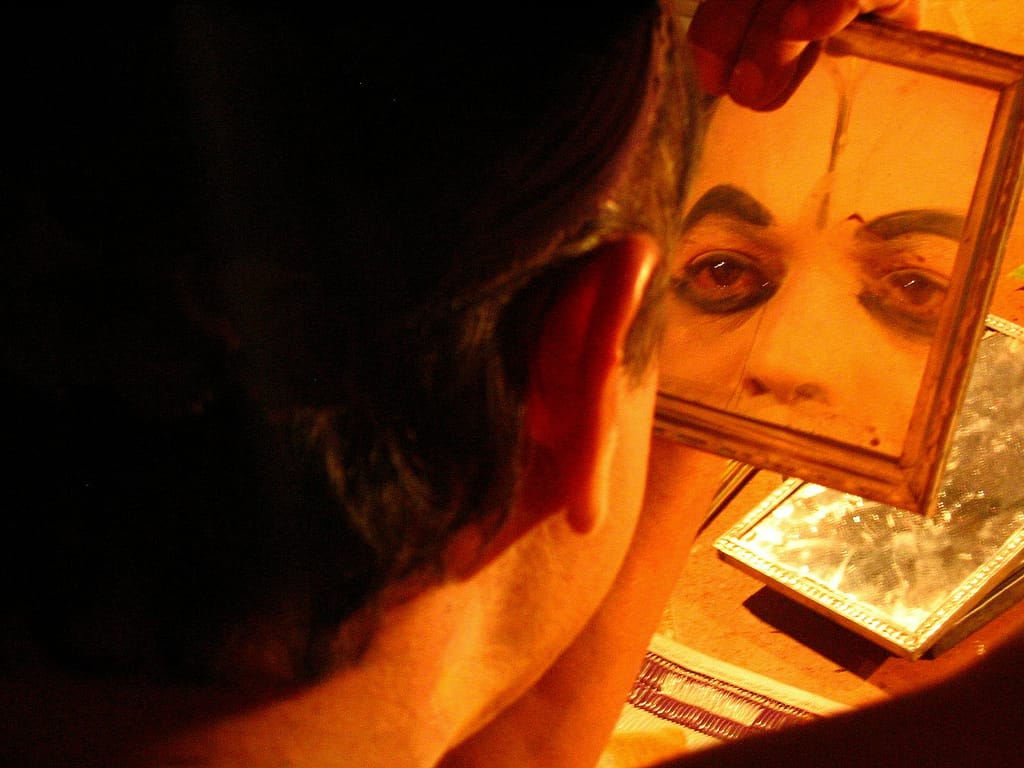
Psychological traits: There’s more than what doesn’t meet the eye
Traits and States
Psychological traits such as self-esteem, personality, and intelligence are commonly approached as being relatively stable qualities that reside within the individual (i.e. they are latent). It is assumed that such underlying traits generate relevant “state-like” expressions – such as our thoughts, our emotions, and our behavior at any given moment. For example, self-esteem has a trait aspect and a state aspect. Individuals are thought to differ in how “high” or “low” their (general) trait self-esteem is, and how an individual feels about him/herself at any given moment (i.e. state self-esteem) is thought to be determined by that individual’s trait. In this way low trait self-esteem, by default, generates momentary self-experiences that are negative (negative emotions and thoughts about oneself). Finally, it is assumed that if the momentary state expression does not correspond with the underlying level of trait self-esteem, that this discrepancy is due to the context: If an individual with low trait self-esteem is in a supportive and positive context, his or her state self-esteem will likely be momentarily positive. The assumption, however, is that this elated self-esteem will drop again – back to the “normal” trait level – once the positive context has passed [1]. The deviation of state self-esteem away from the level of trait self-esteem, therefore, can be compared to error due to the immediate context [2].
This common approach places the latent trait in the theoretical and empirical spotlight. Theoretically, it is emphasized as the origin of inter-individual differences and is thought to be the primary generator of relevant behavior, emotions, and thoughts in our daily lives. Empirically, studies focus on individual differences at the level of the trait, with questions such as “which variables predict high/low trait self-esteem and its development?”, or vice versa, “what is high/low trait self-esteem predictive of?”
The study of self-esteem and its development, therefore, tends to be reduced to the study of the relationship between trait self-esteem (development) and other variables.
Daily ups and downs: meaningless or meaningful?
While such research is valuable in setting the groundwork for understanding the relationships between variables, I suggest that the study of self-esteem (and indeed, any concept that is traditionally seen as being “trait-like”) can – and should – include much more than the study of variable associations. Rather than explaining the positive or negative development of trait self-esteem based on external variables (such as peer social support) [3]) I suggest that the development of trait self-esteem can be best explained by zooming in on daily ups and downs of state-like experiences that are commonly seen as contextual error. State self-esteem, in this approach, is not a byproduct of trait self-esteem; it is the driving force behind trait self-esteem development, and therefore, behind the emergence of individual differences in trait self-esteem levels.
I suggest that traits, such as trait self-esteem, are not stable and latent within us, but that they are slowly yet continuously changing in a dynamic manner due to moment-to-moment fluctuations of an individual’s state-like feelings, thoughts, and behavior. This is not to say that an individual’s state-like experiences are not at all influenced by the individual’s trait self-esteem, as the trait that has already developed will likely constrain the degree and the nature of the current state self-esteem fluctuations.
State self-esteem and trait self-esteem, therefore, are continuously connected in a circular process of causality, where trait self-esteem constrains the moment-to-moment changes of state self-esteem, and state self-esteem slowly but continuously feeds back into the development of trait self-esteem [4]. The moment-to-moment changes that occur in state self-esteem, therefore, are not conceptualized as being incidental fluctuations that occur as separate reactions to the current context. Instead, each state-like experience influences neighboring state-like experiences, making state self-esteem a meaningful process (resulting in what is called as a fractal process [5]).
A dynamic perspective
From this perspective, a significant shift can be made from variable-focused research, to dynamic-focused research. For dynamic-focused research, the emergence of traits and their development can be understood based on the dynamics that occur at the level of state-like experiences. This can be done by studying real-time and real-life emotions, behavior, and human interactions as they naturally occur in relevant contexts.
Rather than relying on self-report questionnaires in which individuals are asked “how do you feel about yourself at this moment?”, state self-esteem can be studied observationally as self-relevant emotions (such as nonverbal pride and embarrassment), verbalizations (such as “Go me!”), and behavior (such as contributing assertively during brainstorming) during dyadic interaction.
Moreover, rather than averaging these experiences that occur across time into one individual score, and averaging individual scores together to get a group average, analysis techniques that take “time” into account can be used to map how moment-to-moment changes at the state level are related to structural changes at the trait level [6]. All that is required for such a shift, is the prioritization of visible state-like experiences that occur in natural contexts, and the appreciation of the role of time in the unfolding of meaningful trait-like patterns.
Relevant Publications and Links
[1] Leary, M. R., Tambor, E. S., Terdal, S. K., & Downs, D. L. (1995). Self-esteem as an interpersonal monitor: The sociometer hypothesis. Journal of Personality and Social Psychology, 68(3), 518–530. doi:10.1037//0022-3514.68.3.518
[2] Borsboom, D. (2005). Measuring the Mind: Conceptual Issues in Contemporary Psychometrics. New York: Cambridge University Press. doi:10.1017/CBO9780511490026
[3] Hirsch, B., & DuBois, D. (1991). Self-esteem in early adolescence: The identification and prediction of contrasting longitudinal trajectories. Journal Of Youth And Adolescence, 20(1), 53–72. doi:10.1007/BF01537351 .
[4] De Ruiter, Van Geert & Kunnen (under review). A self-organizing model of self-esteem across nested time-scales.
[5] De Ruiter, Den Hartigh, Cox, Van Geert & Kunnen (under review). Fractal scaling in adolescents’ real-time state self-esteem during parent-child interactions.
[6] De Ruiter, Hollenstein, Van Geert & Kunnen (in preparation). An empirical validation of a self-organizing model of self-esteem
NOTE: Image Mirror mirror…by Ananth BS, licenced under CC BY 2.0



